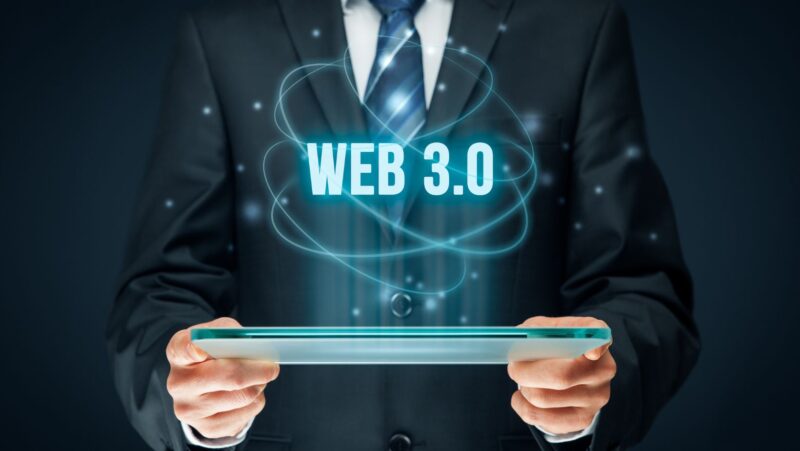
In an era where remote work is becoming increasingly prevalent, managing a construction workforce can present unique challenges.
The traditional on-site supervision model is evolving, and construction professionals must adapt to ensure effective workforce management in dispersed settings. This dynamic shift requires a strategic approach to maintain communication, productivity, and collaboration among team members.
In this guide, we’ll explore the details of constructing a robust Construction Workforce Management Plan, emphasizing the incorporation of cutting-edge tech.
By leveraging these tools, construction leaders can ease operations and foster a collaborative and efficient environment, ensuring project success in the modern age.
Steps to Creating Your Construction Workforce Management Plan
Developing a comprehensive Construction Workforce Management Plan involves a systematic approach encompassing various critical elements.
Here are the key steps to guide you in creating a robust plan tailored to your construction project’s specific requirements:
Assessment of Project Requirements
Begin by thoroughly assessing your project’s scope, timeline, and specific labor needs. This foundational step sets the groundwork for effective resource planning:
● Define Project Scope
Clearly outline the scope of your construction project, detailing the specific tasks, phases, and deliverables. This initial definition sets the boundaries for workforce planning and resource allocation.
● Evaluate Timeline and Milestones
Break down the project timeline into distinct phases and milestones. Understanding each phase’s duration helps forecast workforce demand during peak periods and align resources accordingly.
● Identify Skill Set Requirements
Determine the specific skills and expertise needed for different tasks within the project. This involves creating a detailed list of required competencies and ensuring your workforce possesses the qualifications for successful task completion.
● Assess Equipment and Technology Needs
Evaluate the types of equipment and technology required for various project phases. Consider integrating modern construction tools and machinery, ensuring your workforce has the resources necessary for efficient execution. Additionally, using a construction invoice template can streamline your billing process and ensure accurate financial documentation throughout the project.
● Consider External Factors
Factors in external influences include weather conditions, regulatory requirements, and any potential challenges unique to the project location. Understanding these external factors helps anticipate and mitigate potential disruptions to the workforce.
● Consult Stakeholders and Team Members
Discuss with key stakeholders, project managers, and relevant team members. Collect input on their insights, expectations, and any additional requirements that might impact workforce planning. Collaborative input ensures a more holistic understanding of project needs.
● Forecast Workforce Demand
Throughout the project, historical data, industry benchmarks, and expert opinions will be used to forecast workforce demand. This forward-looking approach aids in proactively addressing potential staffing gaps and optimizing resource allocation.
● Document Findings and Insights
Compile all assessment findings into a comprehensive document. This document will serve as your foundation for the subsequent steps in constructing your Workforce Management Plan, providing a clear roadmap for informed decision-making.
Identification of Key Roles and Responsibilities
Establishing clear roles and responsibilities is paramount for a well-organized construction project. Integrate software solutions to streamline this process and enhance efficiency.

Consider the following example of how software can aid in managing key roles and responsibilities:
Role Assignment Software:
● Implement role assignment software that allows project managers to define and assign roles within the construction team.
● Utilize the software to specify responsibilities, tasks, and expected outcomes for each team member, ensuring clarity in job expectations.
● The software can provide a centralized platform where team members can access their roles, making tracking progress and addressing issues easier.
Real-Time Collaboration Tools:
● Integrate collaboration tools that enable real-time communication and document sharing among team members.
● Foster a collaborative environment where responsibilities and updates can be communicated instantly, reducing the likelihood of miscommunication.
● Such tools facilitate seamless collaboration among team members, even in remote or dispersed work environments.
Task Management Platforms:
● Utilize task management platforms that allow project managers to create, assign, and monitor tasks in real time.
● These platforms enable task allocation and completion transparency, ensuring everyone is aligned with project goals.
● Automated notifications and progress-tracking features create a more accountable and organized workflow.
Resource Allocation Software:
● Implement resource allocation software to optimize the assignment of personnel to specific roles based on skills, availability, and project needs.
● This software aids in preventing the overloading of tasks on certain team members while ensuring an equitable distribution of responsibilities.
● Enables project managers to make data-driven decisions for efficient workforce management.
Example Scenario
In a construction project utilizing role assignment software, the project manager designates a lead engineer responsible for overseeing structural components. The software provides a detailed breakdown of tasks, deadlines, and required resources for the lead engineer.
The lead engineer can communicate progress, challenges, and updates to the project manager and relevant team members through real-time collaboration tools. Task management platforms ensure that each sub-task, such as material procurement or site inspections, is assigned to the appropriate team member, promoting accountability and a streamlined workflow.
Utilization of Technology for Remote Workforce Management:
Embrace modern technologies designed to facilitate remote workforce management. Explore project management software, communication tools, and mobile applications that enhance collaboration, track progress, and ensure real-time communication among team members, especially when working in dispersed locations.
Embrace modern technologies designed to facilitate remote workforce management, and consider leveraging specialized tools like the MobiClocks® app. This innovative application offers invaluable features, such as GPS tracking and geofencing capabilities, enabling precise monitoring of remote work activities.

The GPS feature allows project managers to track the real-time location of field workers, ensuring accountability and enhancing overall project visibility.
Skills Gap Analysis and Training Programs
Identify any skills gaps within your workforce and develop targeted training programs.
Ensure your team has the needed skills to handle the project’s demands. Continuous skill development not only enhances productivity but also contributes to the overall growth of your workforce.
Here are a few benefits of using such tools for your team:
Drones for Aerial Surveys and Inspections:
● Training the workforce in drone operation allows for efficient aerial surveys and inspections.
● Enables rapid data collection, enhancing project understanding and decision-making.
● Reduces manual labor requirements for site assessments, improving overall efficiency.
3-D Modeling Software Proficiency:
● Providing training in 3-D modeling software enhances visualization of project components.
● Enables collaborative planning and identification of potential design flaws before construction.
● Facilitates precise project estimations, reducing the likelihood of delays due to design changes.
Improved Project Management with Technology:
● Training in construction tech tools fosters a tech-savvy workforce capable of utilizing project management software.
● Enhances communication, collaboration, and document sharing, reducing administrative delays.
● Streamlines project timelines by providing real-time updates on task progress and potential bottlenecks.
Efficient Resource Allocation:
● Training workers in technology applications aids in optimal resource allocation.
● Enables better tracking of material usage, reducing waste and controlling costs.
● Enhances overall project efficiency by minimizing resource-related disruptions.
Timely Project Completion:
● Proficiency in construction technology contributes to the timely completion of complex tasks.
● Minimize the learning curve associated with adopting new technologies, ensuring seamless project execution.
● Empower the workforce to adapt to evolving project requirements swiftly and efficiently.
Flexible Scheduling and Resource Allocation
Recognize the importance of flexibility in scheduling and resource allocation. Develop a system that allows for efficient distribution of labor based on project priorities.
Consider factors such as peak work hours, overtime policies, and the ability to adapt to unforeseen changes or emergencies.
Health and Safety Protocols
Prioritize the health and safety of your construction workforce by implementing comprehensive protocols. Ensure all team members are well-versed in safety procedures and provide the necessary protective equipment. Regularly assess and update safety measures to align with industry standards and regulations.
Communication and Feedback Mechanisms
Establish clear communication channels and feedback mechanisms. Foster an environment where your team members feel comfortable expressing concerns or providing input.
Regular check-ins, project updates, and open lines of communication contribute to a collaborative and cohesive workforce.
Performance Tracking and Continuous Improvement
Implement a robust performance tracking system to monitor individual and team progress.
Analyze data regularly to identify key areas for improvement and implement adjustments as needed.
Embrace a culture of continuous improvement, where lessons learned from each project contribute to refining future workforce management strategies.
By following these systematic steps, you can construct a Construction Workforce Management Plan that aligns with the industry’s dynamic nature, enhances productivity, and positions your team for success in the ever-evolving construction landscape.
Navigating Modern Challenges with a Construction Workforce Management Plan
In crafting a resilient Construction Workforce Management Plan, careful consideration of project requirements, utilization of technology, and strategic training programs play pivotal roles.
The dynamic nature of the construction industry demands adaptability, and by following the outlined steps, construction professionals can navigate challenges with finesse.
As the industry continues to evolve, integrating technologies for remote workforce management and specialized training in construction tech ensures that teams remain efficient and proficient.
Clear role definitions, facilitated by software solutions, contribute to seamless collaboration, fostering a work environment that thrives on transparency and accountability.












